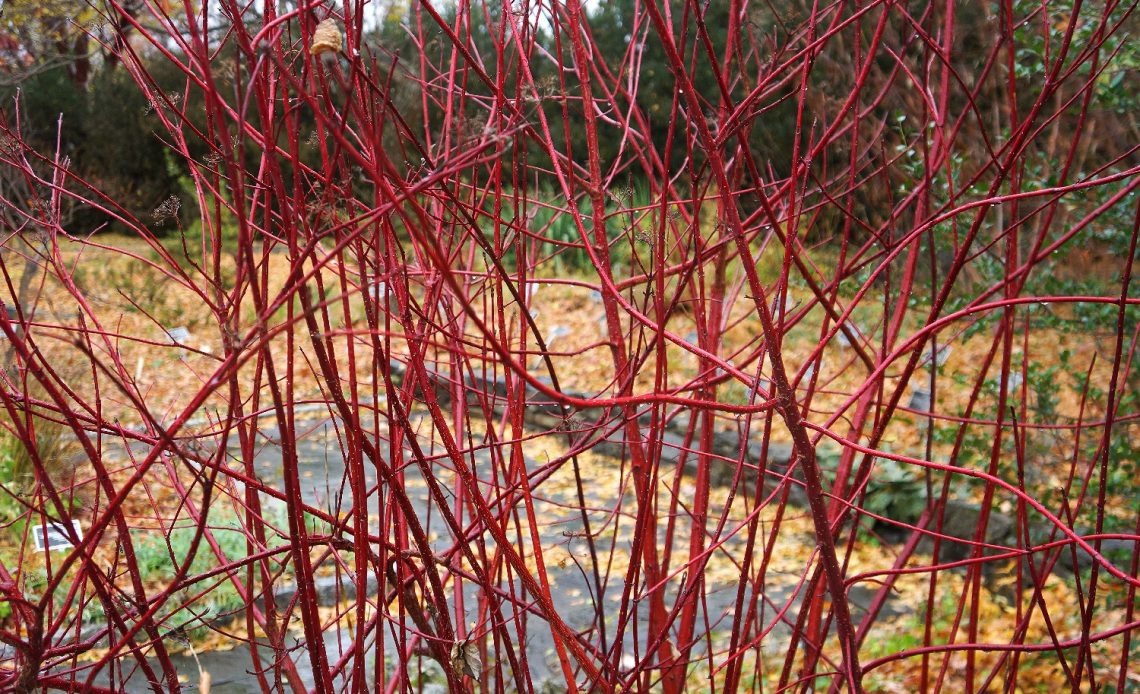

We’re here to help! Wild Yards is a completely free website that is 100% dedicated to helping you create a wildlife-friendly, sustainable yard. Read more
WildYards is reader-supported. When you buy a product through a link on our site, we may earn a comission. Every product is independently selected by our (obsessive) editors and our reviews are unbiased and objective. Read more about our mission or our privacy policy.
The Red Twig Dogwood is covered in bright green foliage and clusters of small white flowers in the spring and summer months. But in the fall, when it sheds its leaves, this deciduous shrub reveals its brilliant fiery red stems adding a shock of color to your landscape throughout the dreary winter. This large shrub makes a showstopping addition to your flower beds. But which Red Twig Dogwood companion plants should you grow along with it?
Japanese Maples and Weeping Willow trees share the Red Twig Dogwood’s growing requirements and complement the shrub’s red stems. Emerald Green Arborvitae and Leyland Cypress provide an evergreen backdrop for this Dogwood’s vibrant twigs. And Hydrangeas and Daylilies turn the shrub’s plain white flowers into an interesting springtime bouquet.
What are the Red Twig Dogwood’s growing requirements?
Heat and cold tolerant, the Red Twig Dogwood can be grown in zones 2 through 9. Like all Dogwoods, it prefers to be grown in full to partial sun. This is a large shrub that grows 8 feet tall by 8 feet wide. It’s drought-tolerant once established but can be grown in soggy, waterlogged soils, too.
Red Twig Dogwoods aren’t too picky about their soils. Whether you have sandy, loamy, or clay-dense soil doesn’t matter. As long as the soil is moderately nutrient-rich, these shrubs will be happy. If you have nutrient-poor soil, you may need to amend it with some homemade compost to improve mineral content.
Overall, the Red Twig Dogwood is incredibly easy to care for, requiring minimal attention. However, these shrubs do benefit from annual feedings. Use a general-purpose tree/shrub fertilizer every spring to promote healthy growth.
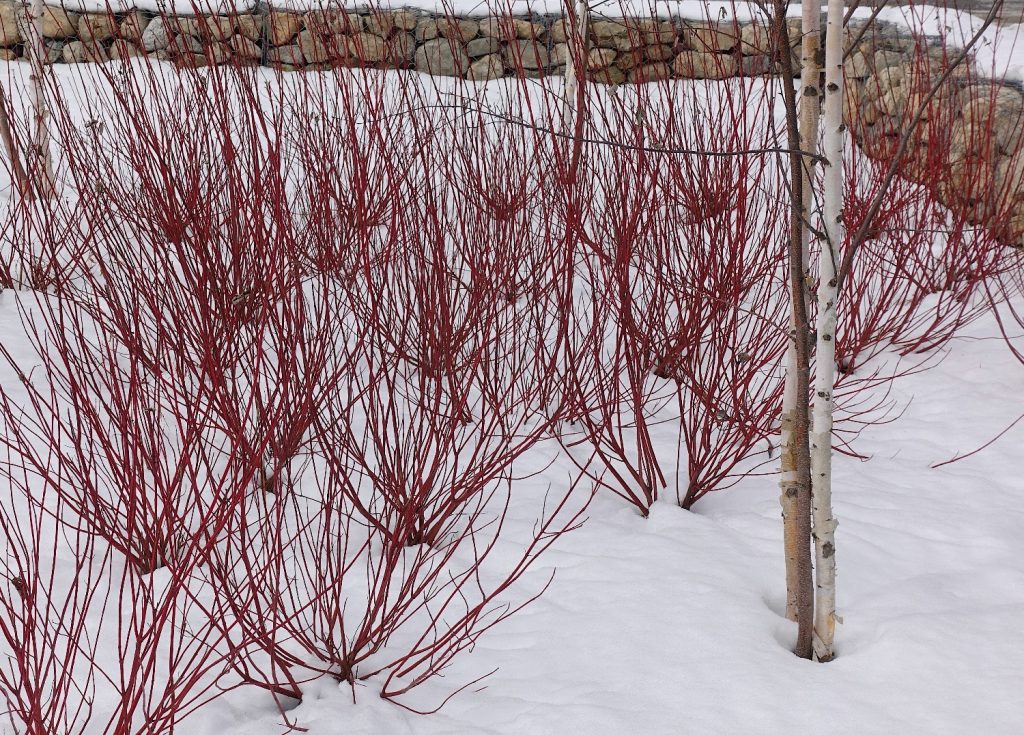
9 Best Red Twig Dogwood companion plants
Now that you have a better idea of what the Red Twig Dogwood needs to grow, you’ll be able to choose companion plants that have similar needs. Here are 9 amazing Red Twig Dogwood companion plants to help you create the perfect landscape.
Yellow Twig Dogwood (zones 3 through 7)
The Yellow Twig Dogwood is a natural choice for a Red Twig Dogwood companion plant. In the spring and summer, the Yellow Twig Dogwood produces bright green leaves and sweet-smelling white flowers that are almost identical to the Red Twig Dogwood. When grown side by side, these two shrubs are indistinguishable — until fall and winter, that is, when they shed their leaves.
The Yellow Twig Dogwood’s golden yellow stems stand in stark contrast to the Red Twig Dogwood. At 8 feet tall by 6 feet wide, the Yellow Twig Dogwood takes on a similar shape as the Red Twig, and because these plants share growing requirements, planting them as a pair just makes sense. Together, these two vibrant Dogwoods will keep your garden colorful year-round.
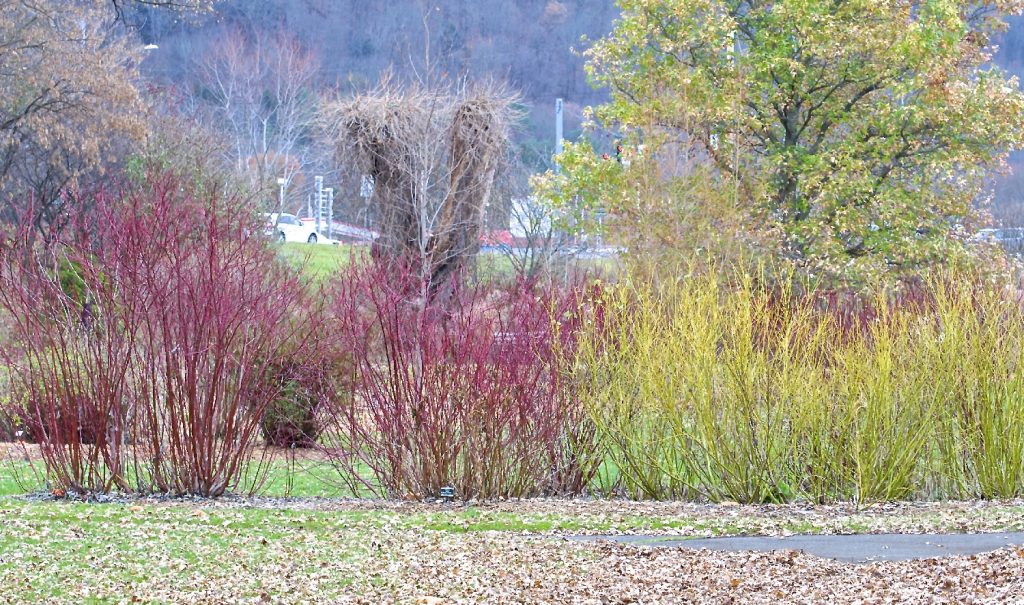
Emerald Green Arborvitae (zones 3 through 8)
During the growing season, the Red Twig Dogwood looks like any ordinary shrub. It’s pretty, but it isn’t spectacular. Only when it loses its foliage does this plant become a focal point. If you want to make sure your Red Twig Dogwood’s vivid red branches are on display, provide them with an evergreen backdrop by planting a row of Emerald Green Arborvitae behind them.
Because they retain their deep green foliage, they accent the Red Twig Dogwood’s ruby-red branches during the winter. These dense hedge trees are drought-tolerant once established and can be used as a living privacy fence or natural windbreak. Emerald Green Arborvitae takes on a Christmas tree-like conical shape when grown wild, although it can be trimmed for a more manicured appearance.
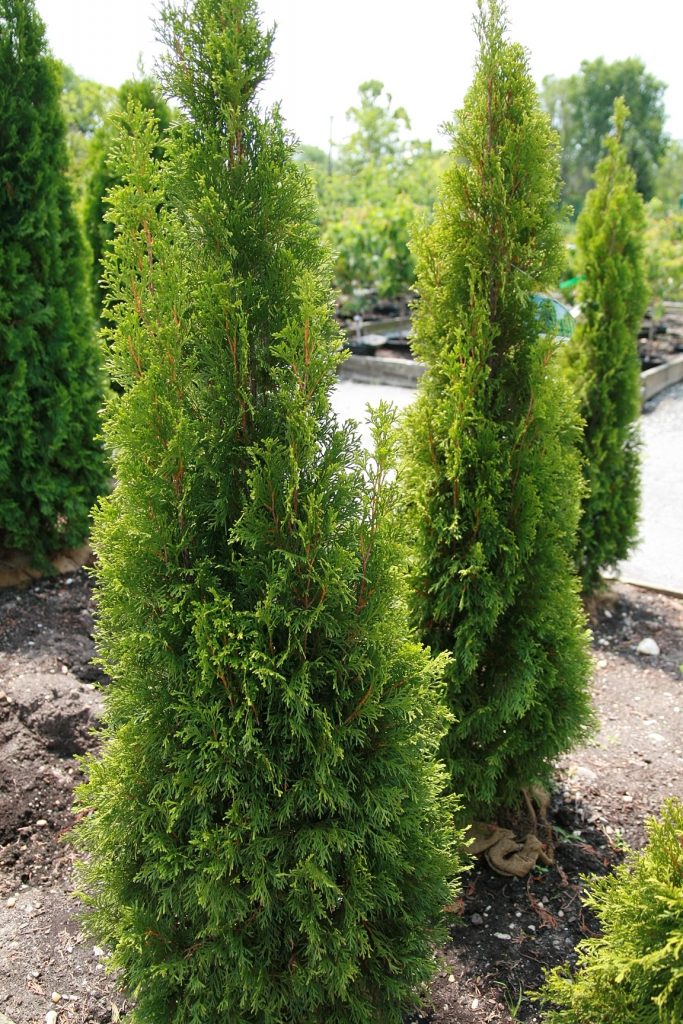
Daylily (zones 4 through 9)
Red Twig Dogwoods take center stage in the cold months, but during the growing season, they play more of a supporting role to the other flowers and trees in your garden. Be sure to provide your Red Twig Dogwoods with plenty of colorful companions by growing them with an array of Daylilies.
These flowers average 2 feet tall and come in a variety of colors, including yellow, orange, red, white, purple, and pink. ‘Prairie Wildfire’ Daylilies produce beautiful red and yellow blooms that accent the Red Twig Dogwood’s white flowers nicely, while the ‘Stelle D’Oro’ Daylily’s yellow flowers create a monochromatic effect. Like Red Twig Dogwoods, Daylilies grow best in full sun and love moist soil. These flowers can also help you attract deer and butterflies to your backyard.
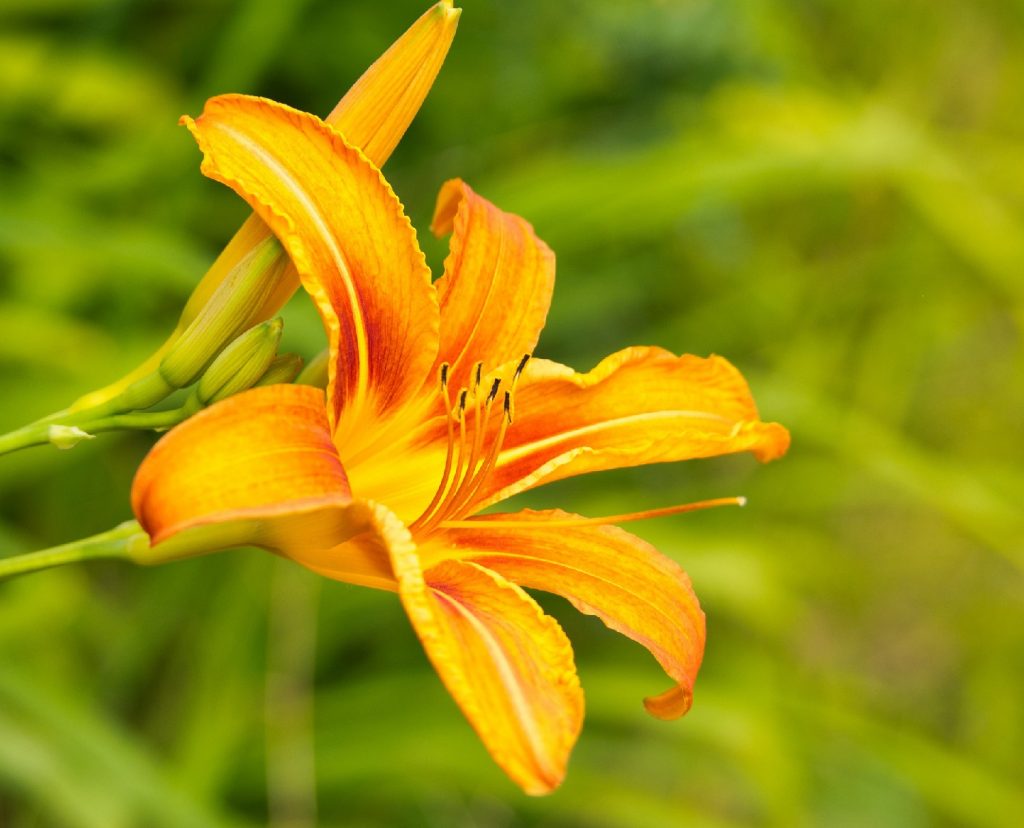
Japanese Maple (zones 5 through 8)
If you want a splash of red in your garden throughout the year, consider growing a Japanese Maple tree as a companion for your Red Twig Dogwoods. These trees are well-suited to growing in pots but can be planted straight in the ground, too. At maturity, Japanese Maples reach 35 feet tall, with a gorgeous cascading spread of deep red foliage.
Japanese Maples are tolerant of most light conditions, from partial shade to full sun. These trees produce scarlet leaves in the spring that turn green as the weather warms up. Once the tree sheds its leaves in autumn, it passes the torch to your Red Twig Dogwoods to keep your garden ruby red through the bleakest months of the year.
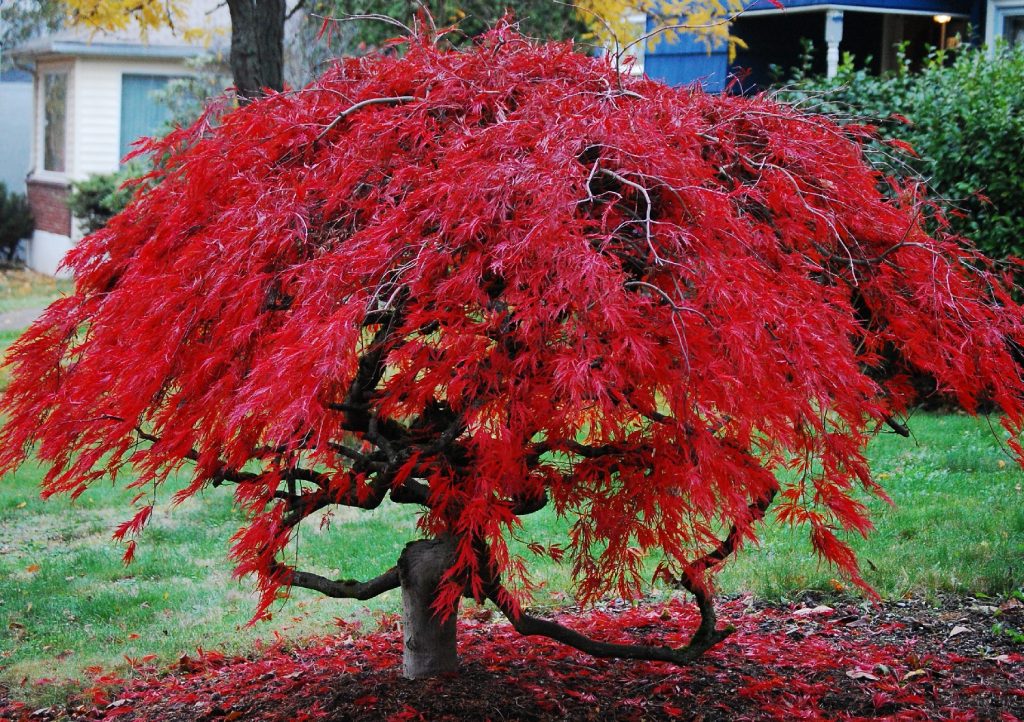
Rose of Sharon (zones 5 through 9)
A type of Hibiscus, Rose of Sharon grows 10 feet tall by 8 feet wide. This shrub’s vibrant blossoms are brimming with nectar, so if you want more hummingbirds and butterflies in your backyard, it’s a must-have. Rose of Sharon is easy to care for, like the Red Twig Dogwood, and its colorful blooms pair well with the Dogwood’s understated white flowers.
Rose of Sharon, also known as Althea, comes in a variety of colors. ‘Bluebird’ Rose of Sharon’s large periwinkle blue flowers have magenta centers, creating a delightful contrast. And ‘Aphrodite’ Rose of Sharon’s bubblegum-pink flowers have a tropical look that provides a showy display of color for your garden during the warmer months until the Red Twig Dogwood’s branches take over.
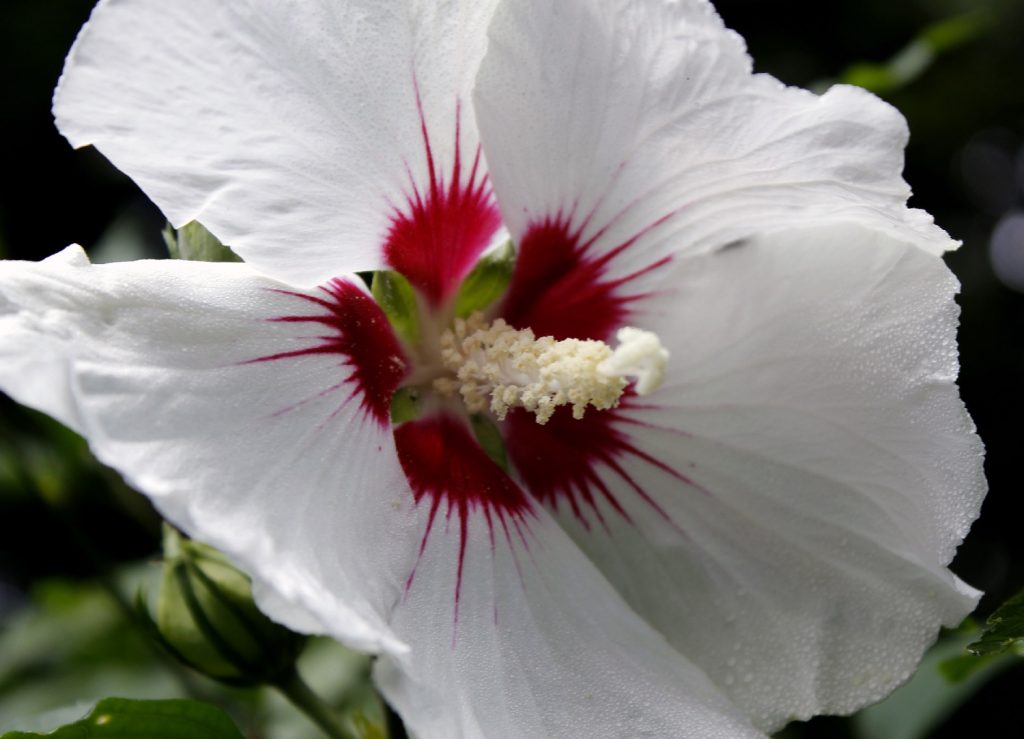
Weeping Willow (zones 4 through 9)
No matter where you plant them, Weeping Willow trees are always a hit. These fast-growing shade trees can grow up to 50 feet tall by 50 feet wide, their otherworldly foliage draping around them gracefully. Because these trees love to grow in moist to wet soil, they’re perfect for use as Red Twig Dogwood companion plants.
Pretty as they are, there are some practical reasons for growing these trees, too. For instance, if your yard is situated on a slope, Weeping Willow trees can help with erosion control. The stems and twigs can also be steeped in water to create your own rooting hormone because Willow trees contain compounds that stimulate root production. However, it’s worth noting that deer sometimes nibble on willow trees. Spray your growing Willows with deer repellent to keep these pests away.
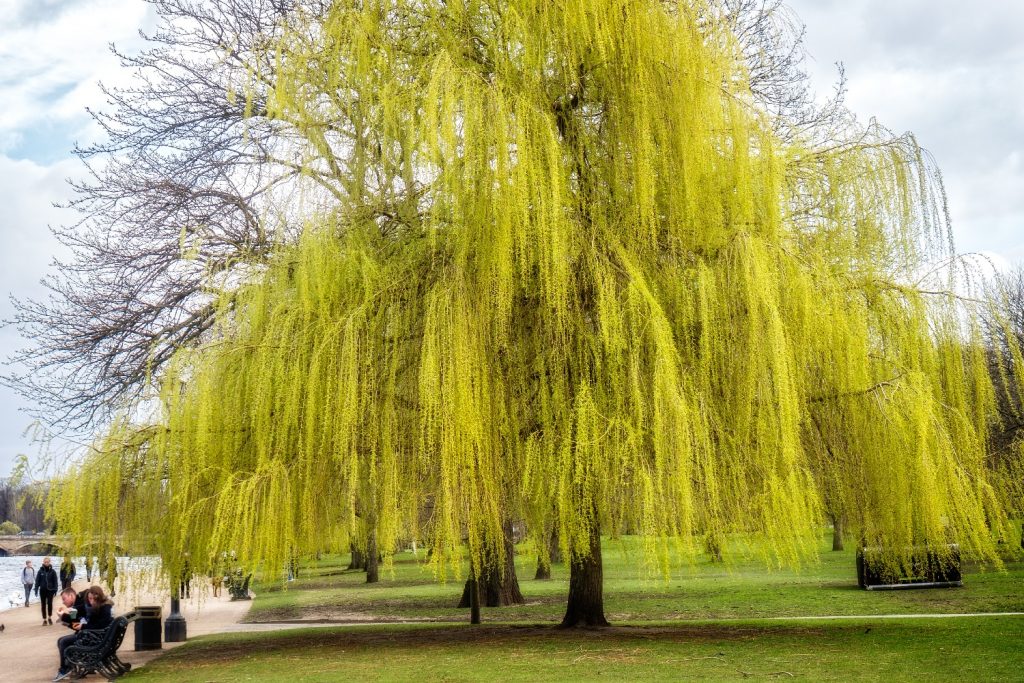
Hydrangeas (zones 3 through 9)
With dark green oval-shaped leaves and huge flower heads in shades of white, red, pink, blue, purple, and green, Hydrangeas are an elegant addition to any garden. These flowers are more than capable of providing your backyard with a dose of color whilst your Red Twig Dogwoods bloom. They’re also wonderful for attracting pollinators, including bees, butterflies, and hummingbirds.
Hydrangeas love moist, well-drained soil, especially when planted in full sun, so they can easily be grown with Red Twig Dogwoods. These are fast-growing shrubs that benefit from nutrient-rich soils. How big your Hydrangeas grow depends on the variety. Blue and purple ‘Endless Summer’ Hydrangeas average 4 feet tall by 6 feet wide, but Panicle Hydrangeas, with their multicolored cone-shaped flowers, can grow up to 25 feet tall by 10 feet wide.
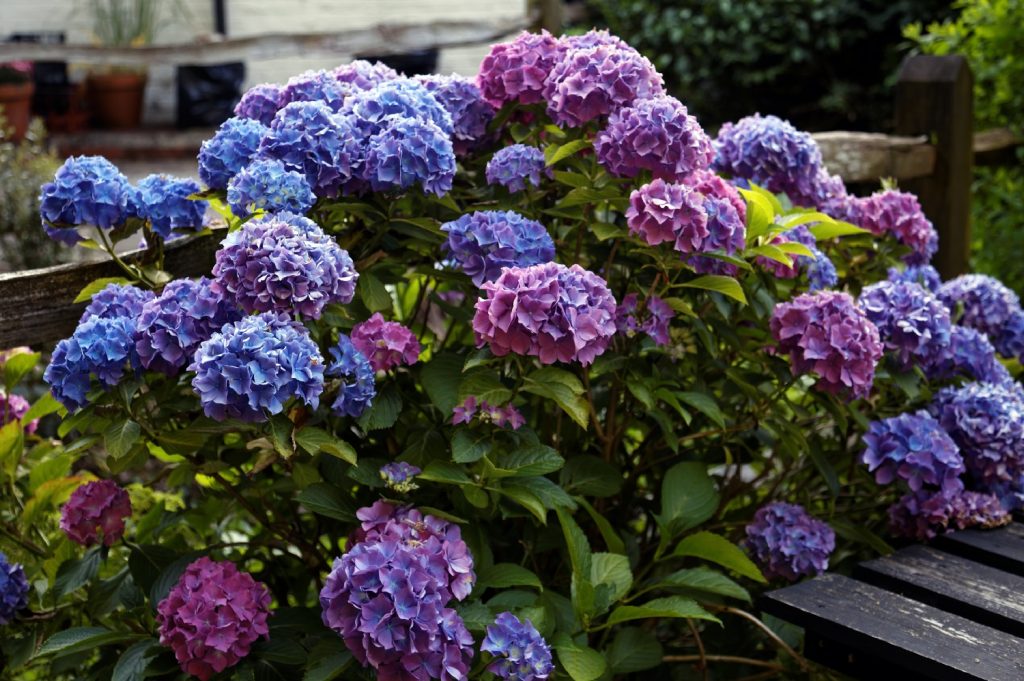
Leyland Cypress (zones 6 through 10)
Another evergreen, the Leyland Cypress is fast-growing and tops out at 60 feet tall with a 25-foot spread. When grown as an informal hedge, Leyland Cypress trees create a forest of deep green color, a beautiful background for your Red Twig Dogwoods during the winter months.
Unlike the prickly, rough foliage characteristic of most evergreens, the Leyland Cypress is soft to the touch, so you won’t flinch if you brush up against it while weeding your flower beds. This tree is adaptable to all soil types, from sandy soils to clay, and because it prefers moist soils, it’s one of the best evergreens to use as a Red Twig Dogwood companion plant.
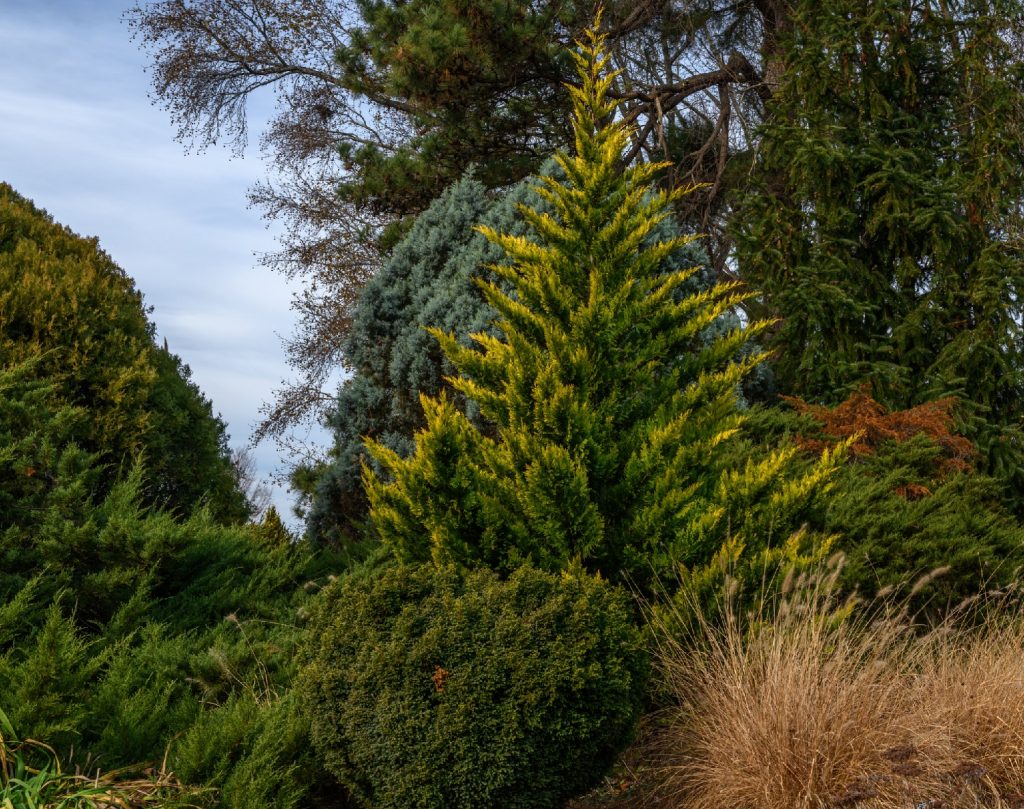
Azaleas (zones 5 through 9)
Azaleas bloom profusely in the early spring, producing dozens of purple, pink, white, red, and orange flowers. This plant has the potential to attract a ton of wildlife. Bees, butterflies, and hummingbirds love to feed on azaleas because they’re a rich source of nectar and pollen. But, unfortunately, deer love to eat azaleas, too. So if you choose to grow azaleas as Red Twig Dogwood companion plants, be sure to deer-proof your yard.
Azaleas are slow to moderate growers that can be grown in full to partial sunlight. Typically, these shrubs max out at 10 feet tall. But smaller varieties, like the pink and purple ‘Conversation Piece’ Azaleas, only reach 3 feet tall, so they’re perfect for growing in front of your Red Twig Dogwoods.
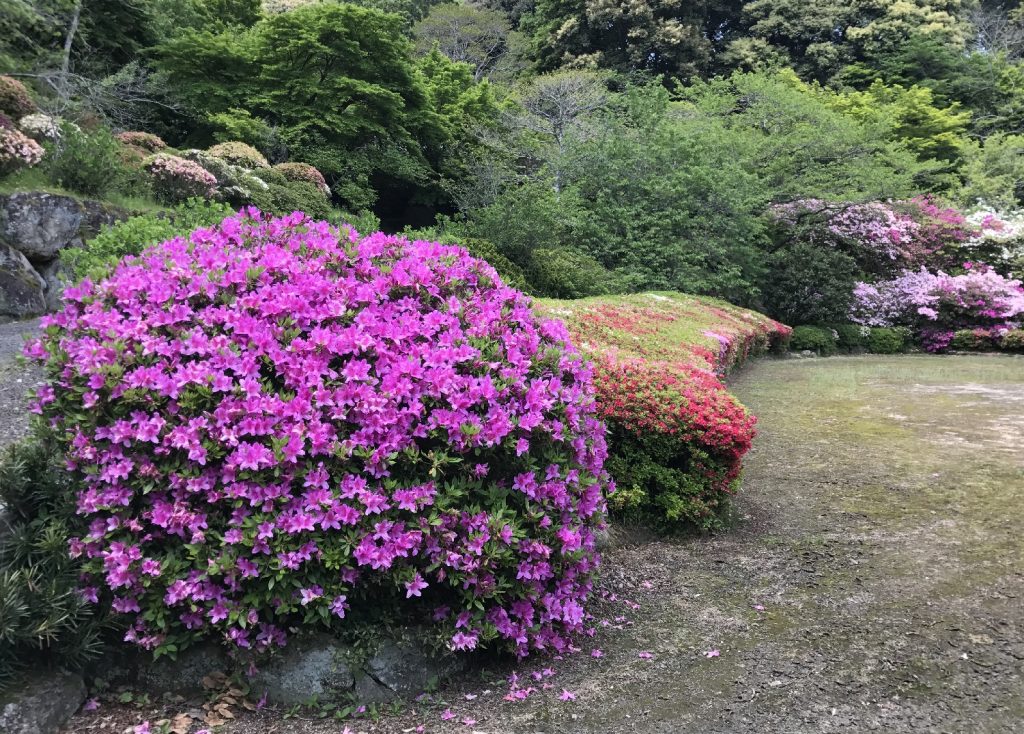
Are there any other Red Twig Dogwood companion plants?
While the 9 Red Twig Dogwood companion plants we’ve chosen are a great place to start, they’re by no means the only plants that can be grown with this beautiful shrub. You can keep any plant with your Dogwoods, as long as they prefer moist, nutrient-dense soils and can be grown in full sun.
Red Twig Dogwoods are an eye-catching shrub in winter, and when grown with flashier springtime blooms against a backdrop of evergreens, can help keep your garden beautiful 365 days a year.
